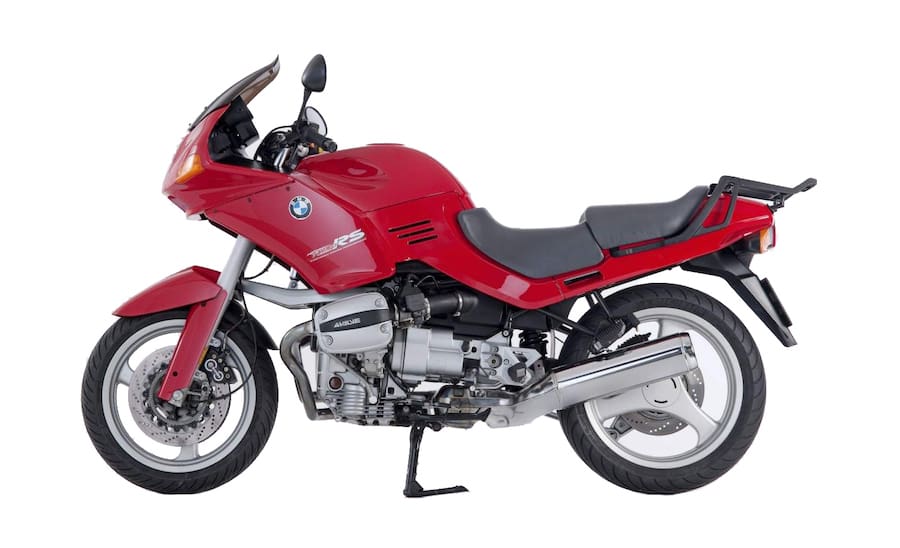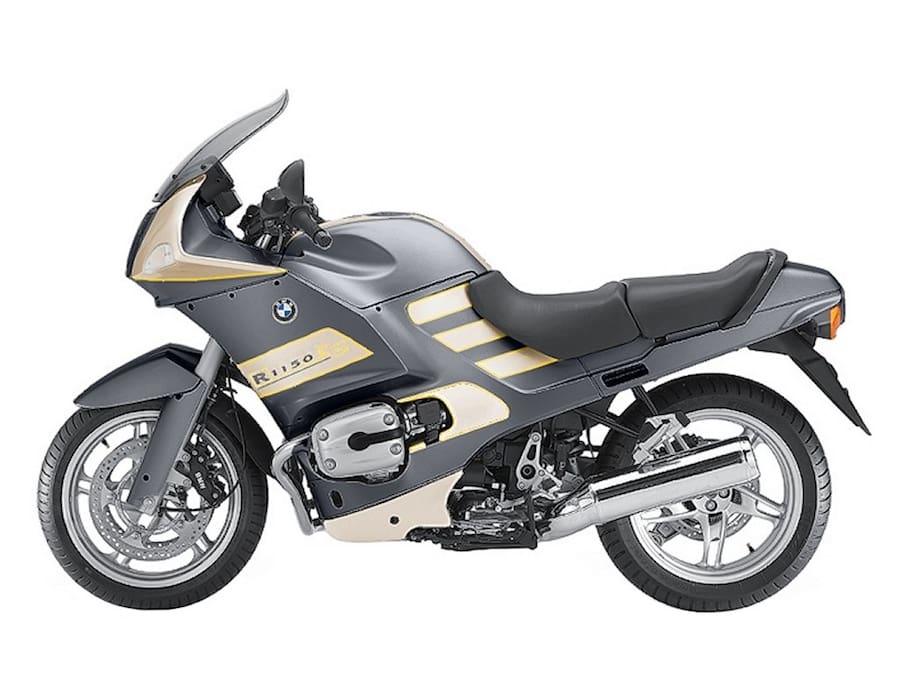Fans of BMW’s boxer-motor models were spoilt for choice by the 2005 line-up of touring bikes. The all-the-bells-and-whistles R1200RT, the rugged dual-sport R1200GS, and the sporty R1200ST were all vying for their attention at BMW dealerships. With the amount of media attention that the luxo-RT and the macho-GS have attracted over the years (deservedly, I agree), let’s give the slightly neglected BMW R1200ST some coverage here.
The new sports-tourer’s sleek styling was generally applauded, although the vertically stacked headlight set-up didn’t suit everyone.
Like its siblings, the ST featured the new-for-2005 1170cc, air/oil-cooled flat-twin engine and six-speed gearbox housed in a tubular-steel lattice-frame. The suspension is BMW’s unique ‘no-dive’ Telelever front and Paralever rear combination.
True to its sports-tourer classification, the ST positions its rider behind a reasonably effective fairing in a comfortable semi-crouch posture, gripping a pair of adjustable clip-ons. Screen height is manually adjustable. Seat height is an accessible 780mm (and adjustable). Ergonomics are kind to a wide range of rider and passenger sizes alike. The pillion seat isn’t as generously padded as the rider seat.
Tacho and speedo are easy-to-read analogue clocks. Supplementary digi-displays vary according to the range of options fitted. The tacho shows a relaxed 4000rpm at an indicated 120km/h in top gear.
I enjoy the ‘torque-rock’ effect on the bike when you fire up the big boxer-twin or when you blip the throttle at the lights. It’s a ‘character’ thing that works for me.
Brake and clutch levers are span-adjustable. Clutch action is light and the six-speeder’s gear selection is precise and accurate, while still producing a familiar BMW ‘clunk’, particularly on downshifts. Partially linked twin 320mm discs up front and a 265mm disc at the rear provide strong braking.
The 82kW max power from its new eight-valve, twin-sparkplug engine represented a 16 per cent increase over the bike it replaced, the R1150RS. With torque similarly boosted and the ST weighing just 205kg – almost 20kg lighter than the RS – it is a pleasingly responsive machine, both in acceleration and handling.
Throttle response is linear and smooth. Max torque comes on from about 2500rpm, making down changes for most overtaking moves optional.
The 21-litre tank gives the ST a safe touring range close to 400km.
While Telelever-suspension first-timers will take a while to adapt to its ‘no-dive’ behaviour, especially when braking hard into tight corners, the reality in these conditions is that it’s very forgiving of both late braking and mid-corner bumps. Although there’s less feedback through the ’bars than an experienced rider gets from a good telescopic fork set-up, the Telelever is very competent and absolutely trustworthy. An ST produces a lovely blend of stability and responsiveness that enables it to cut impressive lines through the twisties.
The R1200ST is a natural competitor to Honda’s VFR800 VTEC and Triumph’s Sprint ST, both capable and worthy sports-tourers. This trio is a study in contrasts, whether you’re comparing engines, chassis or those hard to define qualities that make the riding experiences of the three quite different and pleasing, or not so pleasing, according to individual tastes.
If you’re lucky you might find a second-hand ST fitted with the optional factory hard-panniers – they stow a lot of gear and have an efficient and easy-to-use locking and attachment system. They’re perfect for long-distance touring.
As well as looking for one with factory luggage, keep an eye open for other factory options that include ABS, heated grips, electronic suspension adjustment and tyre-pressure monitoring.
A nicely presented example with good service records would be my first choice.
PRICE GUIDE
New Price
$22,750 (2005) $21,750 (2008)
Second-Hand
$9200– $12,700
WHAT TO LOOK FOR
The R1200ST is a well-built and reliable motorcycle that takes the big kilometres in its stride.
Possible cracking of the rear-wheel hub should have been rectified under a recall – check that the fix has been implemented.
As usual look for damage and signs of neglect, and factor in the cost of worn consumables like tyres, brake pads and brake rotors. STs from the last year of production have simplified brakes that many consider superior to the earlier version that featured servo-assist.
BUILDING BRICKS
BMW R80ST
1983 – This ‘Airhead’ powered ST was based on the R80 G/S and only ran for two years. It was offered as a capable bitumen road sports-tourer to complement the dual-sport touring ability of the G/S.

BMW R1100RS
1993 – This sports-tourer was the first BMW motorcycle to be powered by the all new R259 ‘Oilhead’ engine that boosted power by 30 per cent over the R100 engine it superseded.

BMW R1150RS
2001 – A further increase in capacity and performance plus a new six-speed gearbox defined the sports-tourer model that ultimately made way for the higher performing version, the R1200ST.

SERVICE HISTORY
The R1200ST is a relatively straightforward motorcycle for experienced DIY owners to look after, in terms of basic servicing. A bonus is the easy access for valve clearance work. And it’s an old-school locknut-and-screw set-up. Any issues with its sophisticated electronic systems are best handled by specialists with the right equipment.
My BMW guru, Chris Roberts of BM Motorcycles in Ringwood (Vic), recommends changing gearbox oil when you change the engine oil at each 10,000km service, and the final-drive oil at 20,000km intervals.

WORDS ROB BLACKBOURNE PHOTOGRAPHY AMCN ARCHIVES











